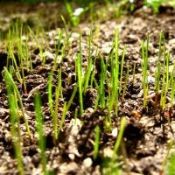Seeds of Change for US Environmental Markets
Markets for ecosystem services, such as endagered species, water quality and carbon in the United States currently operate in a patchwork fashion. The Department of Agriculture’s new Office of Environmental Services aims to fix that by weaving a tracking process that pulls them together.
.

Markets for ecosystem services, such as endagered species, water quality and carbon in the United States currently operate in a patchwork fashion. The Department of Agriculture’s new Office of Environmental Services aims to fix that by weaving a tracking process that pulls them together.
19 March 2010 | While the US Senate’s consideration of an economy-wide carbon market stalls, the United States Department of Agriculture’s (USDA) new Office of Environmental Markets (OEM) is making its move – to scale up infrastructure supporting markets for water quality, wetlands, biodiversity and, yes, carbon.
Launched in 2008 as the Office of Ecosystem Services and Markets (OESM – pronounced by some enthusiasts as “awesome”), the OEM has now been given a more clearly-defined mission and means of achieving it
Secretary of Agriculture Tom Vilsack announced this week that the office, sitting in a prime position alongside the USDA Forest Service and Natural Resources Conservation Service, would now fit under the USDA’s Natural Resources and Environment (NRE) mission area.
The new office’s agenda includes developing science-based metrics and an overall market system to help private landowners manage, measure and bring agriculture, forest, and rangeland conservation benefits to market. Creating a market-based system that functions across existing and separately designed marketplaces for ecosystem services is no small task.
Elizabeth Larry, Ecosystem Services Program Lead at OEM, notes “The registry is an essential component – it’s where ecosystem markets at different scales, under different protocols, come together. It’s the hub.”
Section 2709 of the 2008 Farm Bill (The Food, Conservation, and Energy Act of 2008) directs the Secretary of Agriculture to “establish technical guidelines that outline science-based methods to measure the environmental services benefits from conservation and land management activities in order to facilitate the participation of farmers, ranchers, and forest landowners in emerging environmental services markets.”
Specifically, the act calls for procedures to measure, protocols to report and registries to “collect, record and maintain” environmental benefits; OEM is the USDA’s response to this directive, and they hope it will fit the bill.
“Over the past several years, USDA has seen great advances in ecosystem services research and market potential,” said Harris Sherman, Under Secretary for Natural Resources and Environment.
He continues, “We will build on this innovation and coordinate across USDA and with our partners to develop these promising new markets.”
Eight-year veteran USDA Forest Service Associate Chief Sally Collins currently serves as OEM’s Director.
Please see our Reprint Guidelines for details on republishing our articles.
Additional resources
Please see our Reprint Guidelines for details on republishing our articles.

